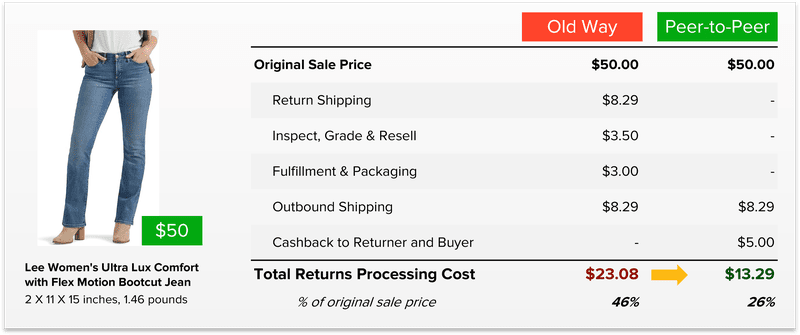Preparing for Peak Holiday Season: A Guide for Sellers

Last updated on March 13, 2025

In this article
 9 minutes
9 minutes
- Understanding Peak Season
- Important Holiday Dates for Peak Season
- Strategic Demand Analysis, Forecasting, and Marketing Execution
- Ecommerce Trends to Watch
- Optimizing Fulfillment, Logistics, and Inventory Management
- Fulfillment Services
- Leveraging Technology
- Elevating the Customer Experience
- Preparing Customer Support Teams
- Managing Returns Effectively
- Contingency Planning for Unforeseen Challenges
- Ensuring Scalability and Sustainability
- Converting Challenges into Strategic Wins
- Frequently Asked Questions
The peak holiday season is the most critical time of the year for ecommerce businesses, characterized by intense order volumes, high consumer expectations, and operational complexities. In particular, ecommerce sellers that fully outsource their fulfillment operations require different preparations that retailers and brands that own their fulfillment workflows don’t have to consider. A proactive approach focused on forecasting and planning for logistics needs, customer service demand, and supportive technologies is essential for navigating this high-stakes period effectively.
Understanding Peak Season
Peak season is a critical period for online retailers, typically occurring in the months leading up to and including the holiday season. During this time, ecommerce businesses experience significant shifts in sales and revenue, with certain periods, such as the holiday season, being pivotal for growth. Understanding peak season trends and statistics is crucial for ecommerce businesses to effectively prepare and meet customer demand. By analyzing past performance and anticipating future trends, online retailers can strategically plan their inventory, marketing, and customer service efforts to maximize their success during this high-stakes period.
Important Holiday Dates for Peak Season
The holiday peak season typically spans from October to December, encompassing key shopping events like Black Friday, Small Business Saturday, and Cyber Monday. There are about 30 days between Thanksgiving and Christmas, but the actual range is 27 to 33 days, so the holiday shopping season varies for shoppers who don’t start browsing or buying until Black Friday.
Daily shipment volumes can increase by 1,000% or more in ‘normal’ years, placing significant strain on fulfillment operations. However, some industries see even higher spikes in demand based on the holiday shopping season’s start after Thanksgiving Day. Ecommerce retailers will want to be more conservative with their delivery promises to customers needing to receive their orders before holiday events than normal.
Make sure to review each Carrier’s Published Shipping Deadlines to Ensure Delivery on or Before Christmas Eve:
Carrier / Service |
Contiguous U.S. (lower 48 states) |
Alaska, Hawaii, International, Military |
|---|---|---|
USPS Ground Advantage |
7 days before Christmas |
|
USPS Priority Mail |
6 days before Christmas |
|
USPS Priority Mail Express |
4 days before Christmas |
|
UPS 3 Day Select |
6 days before Christmas |
|
UPS 2nd Day Air |
5 days before Christmas |
|
UPS Next Day Air |
2 days before Christmas |
|
FedEx Ground Economy |
13 days before Christmas |
|
FedEx Express Saver |
6 days before Christmas |
|
FedEx 2Day & 2Day AM |
5 days before Christmas |
|
FedEx SameDay |
1 day before Christmas |
Strategic Demand Analysis, Forecasting, and Marketing Execution
Accurate forecasting is the foundation of successful holiday operations. Analyzing historical sales data to identify trends, understanding seasonal consumer behavior, and mapping inventory needs help prevent both stockouts and overstock situations. Collaborating with suppliers well in advance to secure production and delivery schedules is critical. Factoring in extended lead times for manufacturing and transportation ensures inventory is positioned where it is most needed.
Taking the time to carefully plan promotions, new listings for bundle and/or kit SKUs, multi-packs, etc. can all help online businesses increase revenue opportunities.
Ecommerce Trends to Watch
Several ecommerce trends are expected to shape peak seasons. Online shoppers increasingly use their smartphones to make purchases, with mobile commerce sales projected to account for 78% of total ecommerce sales; over $490 billion. This shift underscores the importance of optimizing for mobile shopping experiences.
Social commerce continues to drive growth and influence purchase behavior, with social media platforms accounting for an estimated 18.5% of all online sales and this percentage is only expected to continue to grow.
Additionally, streamlining returns management can be a major differentiator for ecommerce businesses, with online order returns at 20 – 30% and costs exceeding $800 billion a year. Staying ahead of these trends can help ecommerce businesses enhance customer satisfaction and boost sales during the peak season.
Optimizing Fulfillment, Logistics, and Inventory Management
Meeting increased demand during the holiday season requires a well-structured fulfillment strategy. Distributing inventory across multiple warehouses using fully outsourced fulfillment partners such as Cahoot can significantly reduce shipping costs and transit times and increase on-time delivery performance. Fulfillment partners offer advanced tools and infrastructure to rapidly scale operations while delivering exceptional customer experiences for the brand.
Make sure to review third-party receiving deadlines and blackout dates and plan to have inventory inbounded and fulfillment-ready long before it needs to be. Communicate emergency contact info, volume forecasts (especially if any big spikes are expected from special promotions or sales from far-reaching sources such as Good Morning America Deals & Steals), and most importantly, make sure providers have enough stock on hand (including a buffer) to ship all orders on time, including any specialty items such as inserts or branded packaging materials.
Fulfillment Services
Fulfillment services play a critical role in ensuring a successful peak season for ecommerce businesses. A fulfillment partner can help businesses improve their logistics and supply chain management, reduce costs, and increase customer satisfaction. When choosing a fulfillment partner, ecommerce businesses should consider factors such as warehouse locations, types of products, order volume, SKU count, and inventory shrinkage allowance. By outsourcing fulfillment, ecommerce businesses can focus on other areas of their business, such as marketing and advertising, product development, and customer service. This strategic delegation allows businesses to scale efficiently and meet the heightened demands of the peak season.
Leveraging Technology
Make sure third-party fulfillment partners (3PL) can successfully deliver quick and efficient pick/pack operations with minimal fulfillment defects for your online store. Retailers need to make sure to manage inventory and listing visibility across channels and marketplaces, and communicate with customers in real-time about order status and tracking. Automated returns systems simplify post-purchase processes (which can also be outsourced), and enhance customer satisfaction and the likelihood of repeat purchases and increased lifetime customer value.
Elevating the Customer Experience
Providing an exceptional customer experience is a competitive differentiator for online stores during the holiday rush, especially post-holiday when customer-initiated return requests will peak. Transparent communication about shipping deadlines and potential delays fosters trust. Branded tracking pages that include upsell and cross-sell ideas, as well as other promotional and/or discount offerings can help encourage repeat purchases and increase customer lifetime value. Offering Delivery Date Promises using tools such as Fenix Commerce or ShipperHQ or Order Management systems like Pulse Commerce where the customer can place an order knowing the estimated delivery date helps increase conversion. Offering real-time order tracking and flexible shipping options reduces cart abandonment. Lastly, personalized packaging, branded unboxing experiences, and thoughtful details like gift notes or sample products can leave a lasting impression.
Preparing Customer Support Teams
The holiday season places heightened demands on customer service infrastructure. Expanding support teams and equipping them with training tailored to holiday-specific scenarios enables quicker, more accurate resolution of customer inquiries, and helps retain revenue when employees are trained to offer exchanges or gift cards rather than refunds for return requests. Comprehensive self-help FAQs and automated chat solutions provide additional support layers, ensuring seamless communication using the customer’s desired method of outreach.
Managing Returns Effectively
Returns are always a headache. But with returns rates during the holiday season approaching 30%, investing in an efficient returns process is a critical component of the overall peak season strategy. Clear, easily accessible return policies reduce customer frustration and cart abandonment. Advanced systems for processing returns and restocking inventory minimize revenue losses and improve operational efficiency.
Contingency Planning for Unforeseen Challenges
Even with thorough preparation, unexpected challenges such as extreme weather or carrier delays can arise. Working with fulfillment partners that offer distributed inventory options ensures continued operations during local disruptions. Active management of marketplace shipping templates associated with listings based on regional disruptions can prevent the over-promising of delivery commitments that customers rely on for a great experience.
Ensuring Scalability and Sustainability
Scalable solutions are essential to handle the dramatic increase in orders during peak seasons. Fulfillment partners that employ scan verification and next-generation shipping software minimize fulfillment defects leading to higher overall margins and happier customers. Sustainable practices, including eco-friendly packaging options and carbon-neutral shipping methods, appeal to environmentally conscious consumers while aligning with long-term business goals and increasing brand reputation.
Converting Challenges into Strategic Wins
Peak season preparation should begin months in advance. Early steps include finalizing demand forecasts, optimizing inventory positioning, and testing technical solutions for peak performance. Maintaining clear communication with all stakeholders and monitoring performance metrics ensures smooth operations.
The holiday season presents a unique opportunity to build customer trust that leads to lasting relationships. By focusing on strategic planning, leveraging technology, and prioritizing the customer experience, businesses can transform the challenges of peak season into a powerful growth opportunity. The most successful organizations approach this period with adaptability, innovation, and a commitment to delivering excellence.
Frequently Asked Questions
How can I prepare for the peak holiday season?
To prepare for the peak holiday season, focus on accurate demand forecasting, strategic inventory management, and optimizing your fulfillment processes. Collaborate with suppliers well in advance, plan promotions, and ensure your customer service team is ready to handle increased inquiries.
How can I optimize my fulfillment and logistics during the holiday season?
Optimize your fulfillment and logistics by distributing inventory across multiple warehouses, using fully outsourced fulfillment partners, and reviewing third-party receiving deadlines. Ensure you have enough stock on hand, including a buffer, to meet increased demand.
What role do fulfillment services play during the peak season?
Fulfillment services play a critical role in ensuring a successful peak season by improving logistics and supply chain management, reducing costs, and increasing customer satisfaction. Outsourcing fulfillment allows businesses to focus on marketing, product development, and customer service.
What are some effective strategies for managing returns during the holiday season?
Effective strategies for managing returns include having clear and easily accessible return policies, investing in advanced systems for processing returns and restocking inventory, and offering flexible return options to reduce customer frustration and cart abandonment.

Up to 64% Lower Returns Processing Cost


